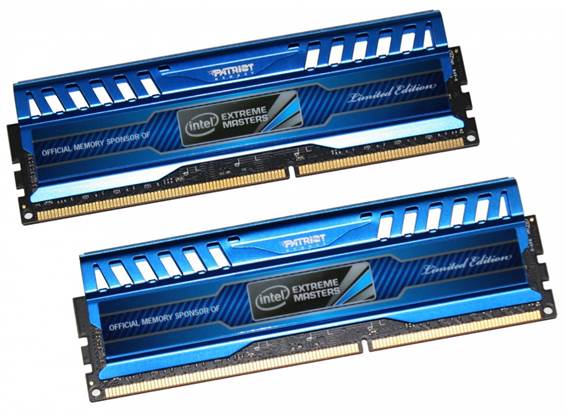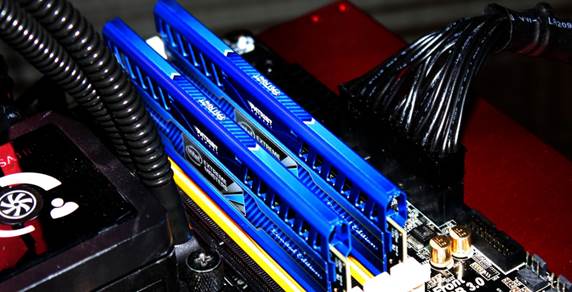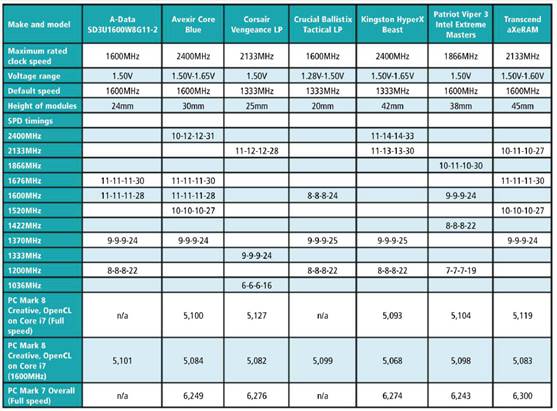Patriot Viper 3 Intel Extreme Masters
16GB DDR3-1866MHz
My recollection may be off by a month or
two, but it seems like it has been a year since I first saw Patriot Viper 3
memory, which was aimed squarely at the Intel Ivy Bridge platform. Fast forward
to mid-2013 and we have seen the launch of the fourth-gen Intel Haswell
processor along with some revamped Viper 3 memory from Patriot.
Regular Viper 3 is available with either
Venom Red or Black Mamba heat spreaders in dual-channel and quad-channel kits,
with speeds that range from 1600MHz to 2400MHz and kit capacities ranging from
4GB to 32GB. The red and black colors appear to be entirely cosmetic and the
hardware in identical in either case.
Patriot Viper 3 Intel Extreme Masters is a
limited edition version of the memory that comes resplendent in Intel Blue and.
yes, there is an actual color called Intel Blue. Did you know the Intel logo
uses a proprietary typeface called Neo Sans Intel? You learn a new thing every
day in this line of work.

Patriot
Viper 3 Intel Extreme Masters 16GB DDR3-1866MHz
The Intel logo appears on the side of each
module, which is clearly a cosmetic exercise to do with the sponsorship of the
Intel Extreme Masters gaming tournaments.
In terms of the hardware, there are no new
features on offer, and the only reference to performance in the specification
is confirmation that Patriot supports XMP 1.3, but it has to he said that is
true of any decent DDR3 on the market.
In total there are ten of these Intel
Extreme Masters kits in the range, but if we ignore the five quad-channel kits,
then what we have on test is a large and fast model with 16GB of DDR3-1866 dual
channel RAM. Alternatively, we might have had an 8GB kit rated at DDR3-2133,
but the slightly slower 16GB kit suited us nicely.
The Viper 3 heat spreaders are fairly tall
at 38mm and are formed from two aluminum stampings that are stuck to the memory
chips with thermal tape. The heat sinks are relatively tall, as the top section
forms a vented chamber that allows air to flow both along and across the module.
One noteworthy feature of the Patriot
memory is that it runs on 1.5V both in Auto mode and in XMP. Corsair manages
the same trick with its 2133MHz memory and I am wholeheartedly in favor of any
measure to reduce power consumption.

Patriot
Viper 3 Intel Extreme Masters
Patriot also gets a pat on the back as the
Viper 3 boots into life running at 1600MHz, rather than the slower 1333MHz we
sometimes see.
The Patriot RAM performed flawlessly at
1600MHz but there wasn’t much extra performance to be gained when I bumped it
up to 1866MHz by enabling XMP.
As you would expect, the extra clock speed
helped increase the bandwidth, but the latency remained surprisingly high.
The combination of relatively low 1866MHz
clock speed and relatively slow latency mean that we feel ambivalent about the
Patriot Viper memory. I rather like the Intel Blue color scheme although AMD
fan boys are likely to disagree. However, the $179 price for 16GB is a touch
higher than I would like. If the Patriot memory was priced at $147, I would
feel much happier, but as things stand. I can lake it or leave it.
Details
·
Price: $179
·
Manufacturer: Patriot
·
Website: www.patriotmemory.com
·
Quality: 7/10
·
Value: 7/10
·
Overall: 7/10
How we test
I tested the DDR3 RAM using a Core i7-4770K
processor on an ASRock Z87 Extreme4 motherboard with a Sapphire Radeon HD 7950
graphics card and SanDisk Extreme SSD running on 64-bit Windows 7. The starting
point was 1600MHz to get a level playing field for benchmarks, and then I used
XMP to increase the speed to the maximum setting.

Testing
results